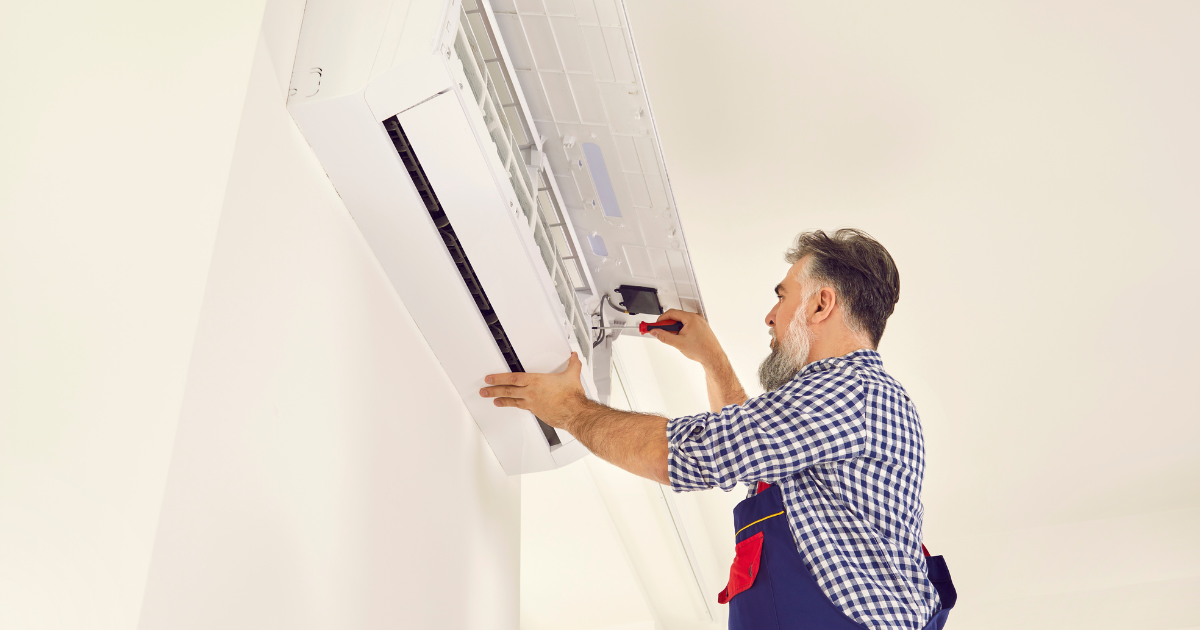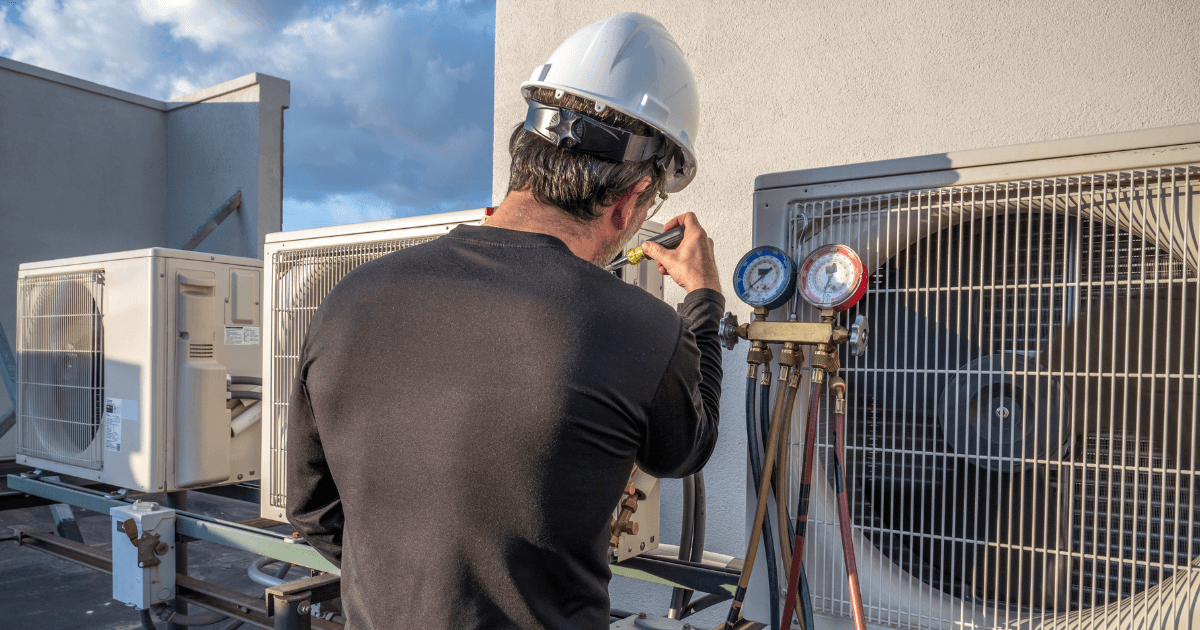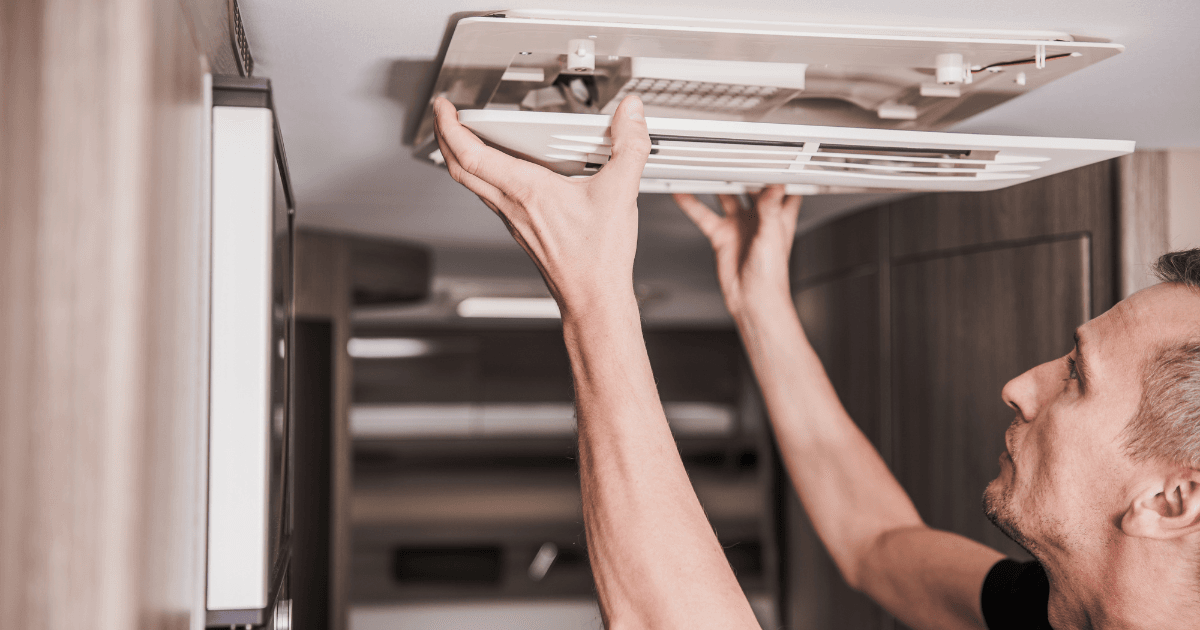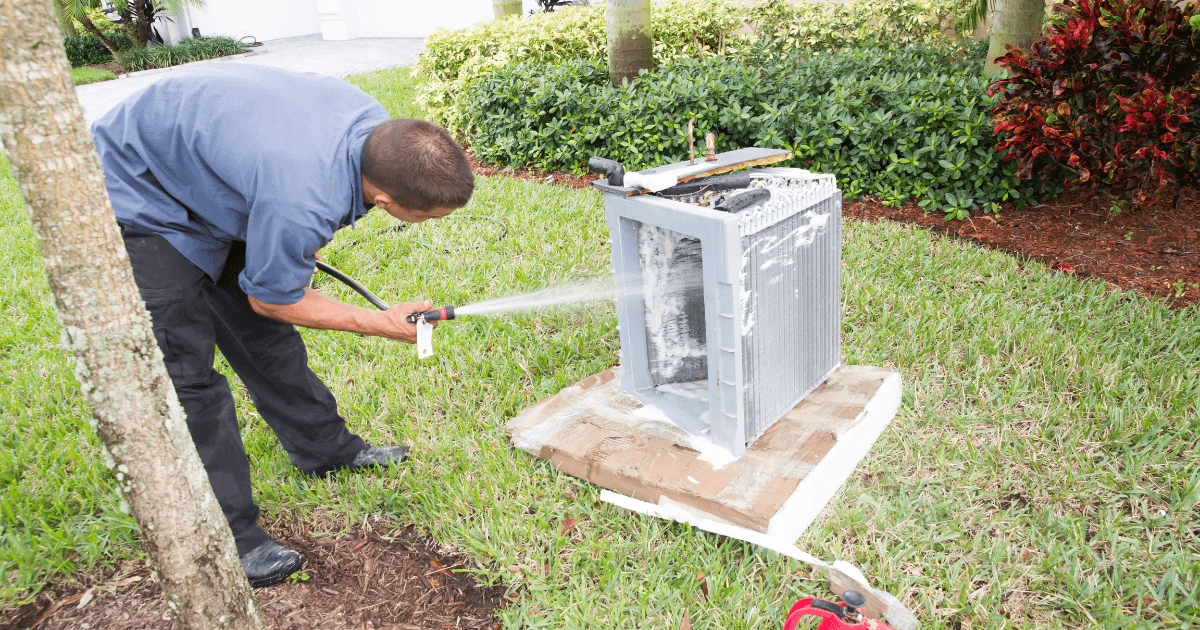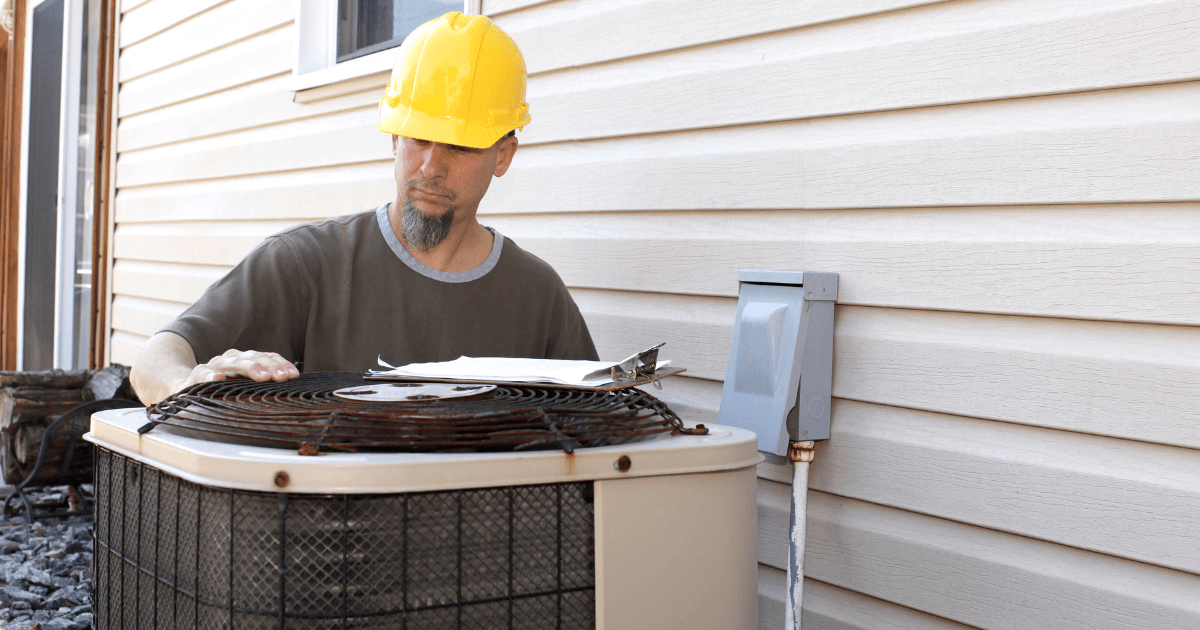Arizona’s brutal summers, marked by days of soaring triple-digit temperatures, are unforgiving on air conditioning systems. For Arizona homeowners, keeping an AC unit running efficiently is more than just a matter of comfort—it’s crucial for safety, energy savings, and system longevity. Traditional advice for AC maintenance tends to emphasize short-term fixes and reactive measures. However, by employing first-principles thinking, we can strip away these assumptions and build a comprehensive, long-term strategy for maintaining your air conditioning system. This article will delve into how Arizona’s unique environment challenges air conditioners, and how homeowners can implement proactive, strategic maintenance that keeps their systems running smoothly, reduces energy costs, and maximizes the system’s lifespan.
The Core Problem: How Arizona’s Climate Strains Air Conditioning Systems
Deconstructing the Environmental Impact
Arizona’s extreme summer heat—often surpassing 100°F for more than 100 days a year—places an intense and continuous demand on AC units. Unlike in milder climates, where air conditioning systems have time to “rest,” Arizona units are frequently running at full capacity, sometimes 24/7, just to maintain livable indoor conditions.
In addition to the heat, Arizona’s desert climate presents another challenge: dust storms and airborne debris. These fine particles can infiltrate the AC system, clogging filters, coating condenser coils, and obstructing airflow. The combination of constant usage and environmental factors means that AC systems in Arizona wear out faster than in other regions, demanding frequent maintenance and energy efficiency strategies to keep them functioning optimally.
First-Principles Insight: AC Systems as Heat Transfer Machines
At its core, an air conditioning unit is a machine designed to transfer heat from inside to outside. This process involves three major components: evaporator coils, which absorb heat; compressors, which pressurize refrigerant gas; and condenser coils, which expel heat. The efficiency of an AC unit depends on how well these components function together in harmony. However, any obstruction—be it clogged filters, dirty coils, or low refrigerant levels—hinders this process, forcing the system to work harder and use more energy.
In an environment as harsh as Arizona’s, small inefficiencies are amplified, causing a direct impact on your energy bills, the unit’s lifespan, and indoor comfort. Addressing this requires more than just reactive fixes; it requires an understanding of the root causes of AC inefficiencies and a proactive approach to maintenance.
Routine Maintenance Tasks to Keep Your AC in Peak Condition
1. Change or Clean Air Filters Monthly
In most climates, air filters can be changed every three months, but in Arizona’s dust-heavy environment, air filters should be cleaned or replaced monthly during peak cooling months. Dirty filters restrict airflow, forcing the system to work harder and increasing energy consumption. A blocked filter can reduce efficiency by 5-15% and put undue stress on the compressor, one of the most expensive components to repair.
- Pro Tip: Use high-efficiency HEPA filters to capture Arizona’s fine dust particles, or opt for reusable filters that can be cleaned more frequently.
2. Clean the Condenser Coils
The condenser coils in the outdoor unit are responsible for releasing the heat that the AC has absorbed from inside your home. When dust and debris accumulate on these coils, it reduces their ability to expel heat, leading to higher energy use and lower cooling capacity. In Arizona, the frequency of dust storms exacerbates this issue.
- Step-by-Step Guide: Turn off the AC, remove the protective grill, and use a garden hose (on a low setting) to gently wash the coils. For stubborn debris, use a soft brush or coil cleaner to avoid damaging the delicate fins.
First-Principles Insight: The efficiency of heat transfer relies on a clean, unobstructed surface for maximum thermal conductivity. Coils clogged with dust insulate the system, trapping heat and lowering efficiency—a problem that compounds over time if not addressed regularly.
3. Inspect and Clean the Drain Line
Arizona’s dry climate can also cause the condensate drain line to become clogged with dust and algae, which can back up and lead to water damage inside your home. Water pooling around the base of your AC unit is a tell-tale sign of a clogged drain line.
- DIY Tip: Homeowners can use a mixture of vinegar and water to flush the drain line every few months, preventing clogs from forming.
4. Clear Debris Around the Outdoor Unit
Arizona’s landscaping often involves rocks and desert plants, which can easily obstruct the outdoor AC unit. It’s essential to maintain at least two feet of clearance around the unit to ensure proper airflow.
- Pro Tip: Consider installing a simple screen or fence around the unit to block direct exposure to dust storms, while still allowing airflow.
Maximizing Energy Efficiency: Cost-Saving Strategies for Arizona Homeowners
1. Install a Smart Thermostat
In Arizona, where cooling costs can account for up to 50% of your home’s energy bill, a smart thermostat can significantly reduce your energy consumption. These devices allow you to set precise schedules, adjusting temperatures automatically based on occupancy, time of day, or weather conditions.
- Suggested Settings: Set your thermostat to 78°F while at home and increase it to 85°F when away. Smart thermostats, like Nest or Ecobee, can learn your patterns and adjust the system accordingly, optimizing cooling when you need it most and saving energy when you don’t.
First-Principles Insight: By reducing the temperature differential between indoor and outdoor environments, you can reduce the energy required to maintain a comfortable home. Smart thermostats help you optimize this differential, cutting down on wasteful energy consumption during off-peak times.
2. Ensure Proper Home Insulation
In Arizona, poor insulation allows cool air to escape and hot air to infiltrate, forcing your AC to work harder. Adding insulation in attics, walls, and sealing air leaks around windows and doors can reduce this strain.
- DIY Tips: Use weatherstripping to seal gaps around windows and doors. For larger gaps, consider using caulk or expanding foam insulation to reduce air leakage.
3. Install Window Films and Use Reflective Blinds
Arizona homeowners can benefit from solar control window films and reflective blinds, which block up to 70% of solar heat gain. This reduces the indoor temperature without placing an extra burden on your AC system.
Proactive Long-Term AC Care: Extending the Lifespan of Your System
1. Annual Professional Tune-Ups
While DIY maintenance is crucial, professional HVAC technicians are needed for a comprehensive annual tune-up. This typically includes checking refrigerant levels, inspecting electrical components, testing system controls, and ensuring that the unit is performing at its highest efficiency.
First-Principles Insight: Much like a car, an AC system has several moving parts that need to be monitored and maintained regularly. A professional technician is trained to catch early signs of wear and tear, preventing small issues from turning into costly breakdowns.
2. Upgrade to a High-SEER Unit
Arizona homes often have older AC systems with low SEER (Seasonal Energy Efficiency Ratio) ratings. A SEER rating measures the efficiency of your AC unit, with higher numbers indicating greater energy savings. If your system is more than 10 years old, consider upgrading to a 16+ SEER unit.
- Long-Term Savings: High-efficiency units can reduce cooling costs by up to 40% over older models. While the upfront cost may be higher, the long-term savings in energy consumption and repair costs make it a wise investment.
3. Shading the Outdoor Unit
Arizona’s direct sun can overheat outdoor AC units, forcing them to work harder to expel heat. By shading the outdoor unit with plants, an awning, or a well-placed screen, you can improve its efficiency by 10-15%.
First-Principles Insight: The outdoor unit’s performance is directly tied to the temperature differential between the inside and outside air. Reducing the heat around the condenser improves its ability to cool the refrigerant, thereby reducing energy consumption.
Conclusion: Rethinking AC Maintenance in Arizona
Arizona’s environment is harsh, but with a proactive, first-principles approach to AC maintenance, you can ensure that your system runs efficiently, keeps your home cool, and reduces your energy bills. By focusing on routine tasks such as cleaning filters and coils, implementing energy-saving strategies like smart thermostats and insulation, and committing to long-term care through professional tune-ups and system upgrades, homeowners can maximize their AC system’s performance and longevity.
The key is not just reacting to problems but anticipating them, taking actions that tackle the root causes of inefficiency. With these insights, Arizona homeowners can transform their approach to AC maintenance, saving money and ensuring comfort through even the hottest summers.
FAQ Section:
- How often should I replace my AC filter in Arizona?
- Due to the dust and dry conditions, it’s recommended to replace or clean air filters every month during peak cooling season to maintain efficiency.
- What temperature should I set my thermostat to in summer?
- Setting your thermostat to 78°F while at home and 85°F while away can help balance comfort and energy savingsWhen someone searches for “Best AC Maintenance Tips for Arizona Homeowners,” they are likely seeking specific, actionable advice on how to maintain their air conditioning systems effectively in one of the hottest and dustiest climates in the U.S. Here’s a psychographic analysis of their intent:
1. Climate-Conscious and Practical Homeowners
- Values: These individuals prioritize comfort, efficiency, and safety in a state known for extreme heat, where a functional AC system is essential to daily life.
- Intent: They are looking for practical, effective maintenance tips that address Arizona-specific issues like extreme temperatures, dust storms, and continuous AC usage. They want guidance on how to keep their AC running efficiently and reliably, especially during peak summer months.
2. Cost-Conscious Consumers
- Values: These homeowners are focused on saving money and reducing energy consumption. They understand that running an AC in Arizona is expensive, and they are eager to find ways to lower their utility bills without sacrificing comfort.
- Intent: They are seeking cost-saving tips, such as thermostat settings, energy-efficient upgrades, and regular maintenance tasks that can prevent expensive repairs or replacements. They want to know what they can do on their own and when to call in a professional.
3. DIY Enthusiasts
- Values: These homeowners are hands-on and enjoy doing minor maintenance tasks themselves. They are likely confident in their ability to handle basic upkeep but are looking for guidance on more specialized tasks.
- Intent: They are searching for step-by-step guides on cleaning filters, coils, and drain lines, as well as advice on diagnosing and fixing minor AC issues before they escalate. Their goal is to extend the life of their AC unit without relying heavily on professional services.
4. Environmentally-Conscious Individuals
- Values: Concerned with sustainability, these homeowners want to reduce their carbon footprint and energy usage while maintaining comfort. They may already have energy-efficient systems or are looking to upgrade.
- Intent: They seek tips that promote energy-efficient practices and environmentally friendly solutions. They are interested in upgrading to eco-friendly AC systems or improving the efficiency of their existing setup through proper maintenance and innovative tools, like smart thermostats.
Article Outline: Best AC Maintenance Tips for Arizona Homeowners
1. Introduction: The Importance of Proper AC Maintenance in Arizona
- Hook: Open with a compelling statistic or fact about Arizona’s climate and energy consumption due to air conditioning, such as how AC can account for 50-70% of summer energy bills.
- Climate-Specific Overview: Highlight the unique challenges of Arizona’s extreme temperatures and dust storms, which increase wear and tear on AC units.
- What to Expect: Introduce the main themes—proactive maintenance, energy efficiency, and DIY tips—to show readers what they will gain from reading the article.
2. Key AC Challenges for Arizona Homeowners
- Constant High Temperatures: Explain how relentless summer heat forces AC systems to run continuously, increasing wear and requiring frequent maintenance.
- Dust and Debris: Discuss the impact of dust storms on outdoor AC units and filters, which can cause blockages and overheating.
- Energy Costs: Describe how Arizona homeowners can face high energy bills due to extended AC use and the importance of keeping systems efficient.
3. Essential AC Maintenance Tasks for Arizona Homes
- 1. Replace or Clean Filters Monthly:
- Explain the necessity of frequent filter changes due to Arizona’s dusty environment. Highlight the cost savings and system longevity that come from clean filters.
- DIY Tip: Offer a step-by-step guide on how to clean or replace air filters.
- 2. Clean Condenser Coils Regularly:
- Describe how dust and debris can clog outdoor units, reducing cooling efficiency.
- DIY Tip: Provide a simple method for cleaning condenser coils and maintaining proper airflow.
- 3. Inspect and Clean the Drain Line:
- Detail the importance of keeping the condensate drain line clear to prevent water damage and mold growth.
- DIY Tip: Share how homeowners can flush the drain line with a vinegar and water solution to prevent blockages.
- 4. Schedule Annual Professional Tune-Ups:
- Explain the role of professional HVAC tune-ups in catching minor issues before they become expensive repairs.
- Pro Tip: Suggest scheduling a tune-up before summer begins to ensure the AC is in peak condition.
4. Energy-Saving Strategies for Arizona’s Climate
- 1. Use a Programmable or Smart Thermostat:
- Highlight the benefits of using smart thermostats like Nest or Ecobee to reduce energy consumption during the hottest hours.
- Savings Tip: Explain how setting the thermostat to 78°F while home and 85°F while away can lead to significant energy savings.
- 2. Improve Home Insulation:
- Discuss how proper insulation and weather-stripping can prevent cool air from escaping and hot air from infiltrating, reducing the load on the AC system.
- DIY Tip: Provide instructions on sealing windows, doors, and other potential air leaks.
- 3. Install Reflective Window Films and Blinds:
- Recommend solar control films and reflective blinds to reduce heat gain through windows. Explain how these products can block up to 70% of solar heat.
5. DIY AC Maintenance Tasks for Hands-On Homeowners
- 1. Clean the Outdoor Unit:
- Explain how dust, leaves, and debris can block the outdoor unit, reducing efficiency.
- DIY Tip: Provide steps for safely cleaning the outdoor unit and checking the clearance around it for optimal performance.
- 2. Inspect Ductwork for Leaks:
- Encourage homeowners to check for air leaks in the ductwork, which can lead to 20-30% energy loss.
- DIY Tip: Share how to seal minor duct leaks using masticsealant or foil tape.
- 3. Lubricate Moving Parts:
- Explain the importance of lubricating the fan motor and other moving parts to reduce friction and prolong the unit’s lifespan.
6. When to Call in a Professional
- 1. Poor Airflow or Inconsistent Cooling: Suggest calling a professional if the system struggles to maintain a consistent temperature or airflow, which could indicate issues with the compressor or refrigerant levels.
- 2. Unusual Noises or Smells: Explain that grinding, banging, or burning smells may indicate serious mechanical issues that require professional diagnosis.
- 3. Unexplained Energy Bill Spikes: Advise that a sudden increase in energy bills could be a sign of an inefficient AC unit, warranting a professional inspection.
7. Upgrading Your AC System: When Maintenance Isn’t Enough
- 1. High-SEER Units: Recommend upgrading to a 16+ SEER unit if the current system is more than 10 years old, explaining how this can cut cooling costs by up to 40%.
- 2. Ductless Mini-Split Systems: For homeowners seeking greater energy efficiency, suggest ductless mini-split systems for zoned cooling, which can be more efficient in specific areas of the home.
- 3. Rebates and Tax Credits: Mention any available rebates or tax credits for upgrading to energy-efficient AC systems, helping offset the cost of a new unit.
8. Conclusion: Stay Cool and Save with Proper AC Maintenance
- Summary: Recap the benefits of proactive AC maintenance, focusing on reducing energy costs, extending the system’s lifespan, and ensuring year-round comfort.
- Call to Action: Encourage readers to begin with DIY tasks and schedule a professional inspection to prepare for the hottest months.
FAQ Section
- How often should I replace my AC filter in Arizona?
- Due to the dusty environment, it’s recommended to replace or clean air filters monthly during peak cooling seasons.
- What’s the ideal thermostat setting to save on energy bills?
- Set the thermostat to 78°F while at home and 85°F while away to balance comfort and energy savings.
- Can I clean my AC’s condenser coils myself?
- Yes! Turn off the unit and use a garden hose to gently wash off debris from the coils. Make sure to clean the surrounding area regularly.

